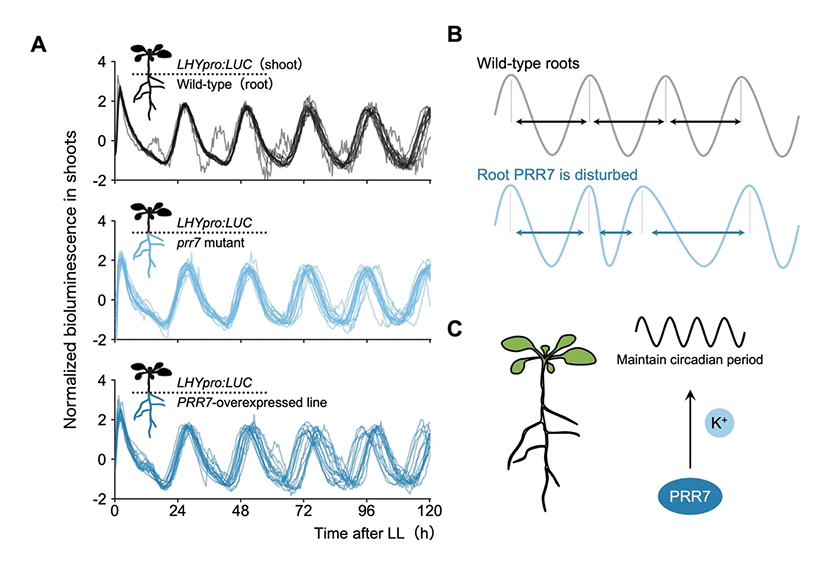2023.02.01
The contribution of roots in shoot circadian clock
Plant Physiology・ Researcher ・ Kyohei Uemoto
Many organisms, including plants, anticipate and prepare for the diurnal fluctuations of environmental conditions by utilizing circadian clock which has an approximately 24-hour cycle. Circadian clocks exist in each organ and communicate with each other to share the temporal information at whole plant level. However, there are still only a few reports about circadian communication in plants and it is largely unknown how plants integrate the temporal information. Here, we show that a novel root-to-shoot signaling for circadian information. Our micrografting demonstrates that one of clock genes, PSEUDO-RESPONSE REGULATOR 7 (PRR7) in roots contributes to the accuracy of the circadian period in shoots. Moreover, we found that potassium ion (K+) transport has a similar contribution to root PRR7 and that PRR7 regulates K+ transport, suggesting that root PRR7 maintain the circadian period in shoots by regulating the transport of K+. Plants are sessile organisms and exposed to severe environmental fluctuations in shoots. Our results suggest that plants might maintain the stable circadian rhythms by receiving the signals from roots exposed to less environmental fluctuations.

Figure: Root PRR7 contributes to the accuracy of circadian period in shoots by regulating K+ transport
(A, B) The bioluminescence of LHYpro:LUC shoots grafted onto the rootstocks of Wild-type (Col-0), prr7 mutant, or PRR7-overexpressed line. When the expression of root PRR7 is disturbed, the variance of period length in shoots is escalated. (C) We found that K+ transport, which is regulated by PRR7, also maintains the circadian period in shoots. Therefore, our results suggest that root PRR7 maintains the circadian period in shoots by regulating K+ transport.
Kyohei Uemoto NAIST Edge BIO, e0009. (2023).
